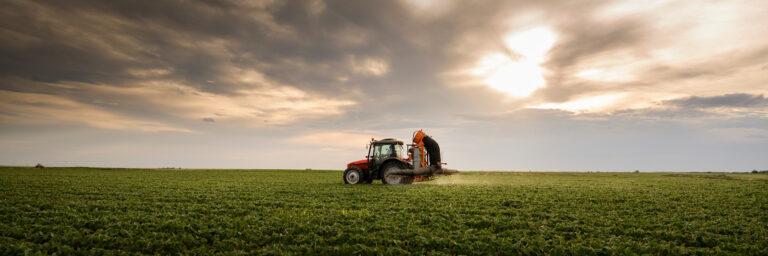
April Business Update: SRUC
After two years of operation as a Limited Company, Agrecalc became part of Scotland’s Rural College (SRUC) as of 1 April 2025.
And our answer is – we are happy to help you with the process of choosing carbon footprint software.
The points below are what we usually advise people who are about to start their low-carbon agriculture journey.
You know the old adage how a journey of a thousand miles starts with the first step? But how can you take that first step if you don’t know where your journey starts, let alone where you’re going? The baseline – that first carbon assessment that you do – is the equivalent of ‘you are here’ on a map.
It is the same when it comes to choosing carbon footprint software. We understand that farmers constantly get bombarded by ‘percentages-reduction-by-this-year’ – type of messages. And you are sick of it. Many of those percentages that float around in the media, the internet and in official government documents sound like insurmountable targets. But don’t panic – in reality, those numbers translate into probably around 1-2 percents per year.
But until you do your first assessment – and in any calculator that is suitable for your business – you won’t know what reduction measures can pay immediately, and what you can leave for a few years down the line.
There is more time than you think to find solutions that suit your farm. But all of that starts with understanding your baseline. And why not now? The timing is perfect for owning your GHG emissions story. Even if you’re not actioning it right away, you are better prepared for the future.
Choosing carbon footprint software and doing a carbon assessment will help you answer some of the questions like these:
Once you have a farm emissions report in your hands – or on your screen – you can move from anecdotal evidence of your business hotspots to concrete, black-and-white, data-driven hard facts.
Furthermore, with solutions like Agrecalc’s Compare package, it is possible to scenario-test certain aspects of your farm, without going through a costly and time-consuming exercise. Adopt a ‘what-if’ mentality, and let the calculator do the work for you.
Once you have a farm emissions report in your hands – or on your screen – you can move from anecdotal evidence of your business hotspots to concrete, black-and-white, data-driven hard facts.
Closely connected with the previous point is the fact that now, with hard data in your hands, your decision making has a solid, auditable trail.
That is the best shield against the potential ‘regulatory stick’ that farmers are afraid may be looming in their future. Informed decision making, evidenced by the reports year after year, shows that you’re moving in the right direction and taking up low-carbon practices with documented results. Let’s not forget, choosing carbon footprint software now only benefits you in improving your efficiencies which should improve your wallet.
The low-carbon practices that are possible to implement will depend on your farming ecosystem – no two farms are the same, and there is no silver bullet or one-size-fit-all approach. The results will reveal themselves cumulatively, year after year, and what our experience so far has demonstrated breaks down to this:
Emissions reduction is a natural by-product of increased resource efficiency; resource efficiency will improve operations and importantly improve your profit and loss – therefore emissions reduction is a bonus to your bottom line. That is why we created Agrecalc in the first place – it is an Ag(ricultral) R(esource) E(fficiency) Calc(ulator).
To demonstrate, here we have two tables from a recent case study:
Both are more or less self-explanatory: the first one shows what happens when you increase the amount of clover in the pasture and reduce the use of artificial fertiliser, in comparison to the previously measured baseline.
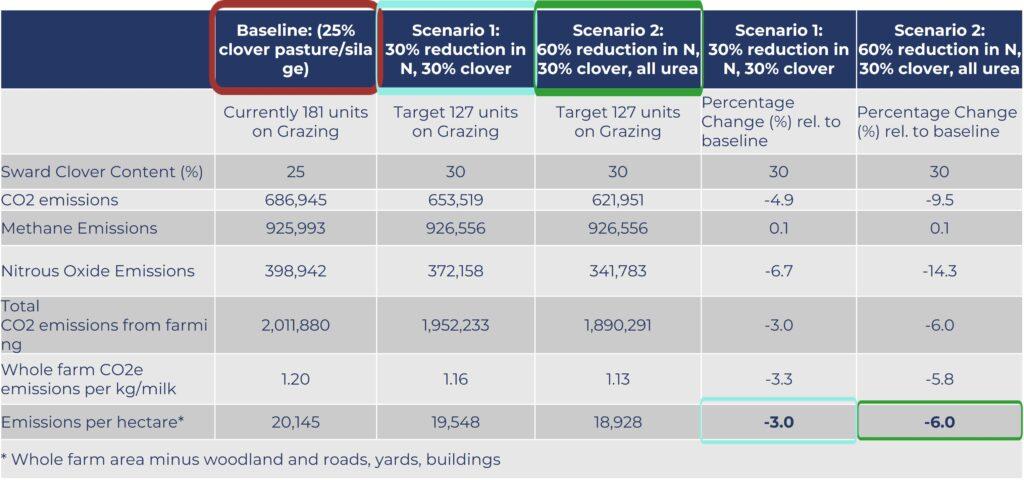
The second one demonstrates a reduction in cow size: the change from a Jersey cross to a Holstein cross. The reduction from cow size of 650 kg to a cow size of 500 kg lowers the emissions by close to 10%. You know your business best; we are here to help you navigate these choppy transition waters with the least amount of boat rocking.
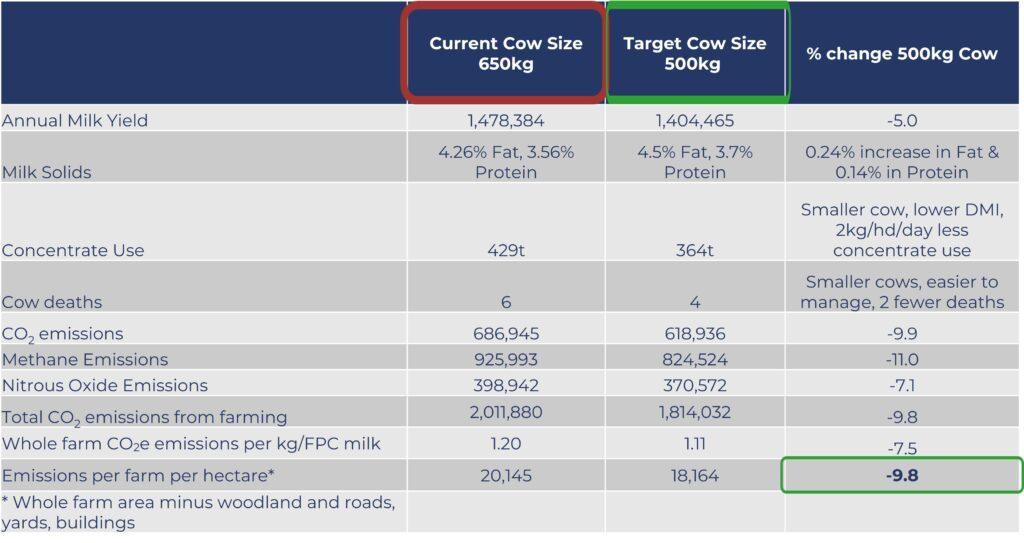
Emissions reduction is a natural by-product of increased resource efficiency; resource efficiency will improve operations and importantly improve your profit and loss – therefore emissions reduction is a bonus to your bottom line.
Agrecalc boasts with the largest farm database among the calculators on the UK market – with more than 30,000 validated reports (and counting), which we use for anonymised benchmarking of farms and enterprises. We hope that our ability to provide you with a robust database of resource efficiency in your industry would be a deciding factor when it comes to you choosing carbon footprint software.
At Agrecalc, we believe that data should be farmer-controlled: you choose with whom you’re sharing your data. You compare your results in the form of anonymised, secure data of farms with the same enterprise, or farms in a particular sector, or the performers in the top / bottom 25%.
But regardless of these numbers – your best benchmark is yourself. Tracking your results year in and year out is the best way to improve your resource efficiency, and as a positive outcome, your emissions reduction too.
Of course, we’d like you to use Agrecalc – the byline of this blog says so. However, all joking aside: you need to choose the tool that suits your business best. Most calculators have free versions too. Test them; and don’t just go for the one that gives you the lowest carbon numbers.
There are many reasons you’d want to choose a specific calculator; for some it may be cost, or the way they input or present data. We recommend that you consider the following:
Choose a balance between your needs and how much you want to invest in your business. Your carbon assessment is not a tick-box exercise – at least it shouldn’t be. If done properly, it can bring a myriad of benefits – to reiterate some:
There is plenty of useful content on our website, and it gets updated regularly. We do our best to highlight all the benefits the farming industry can have from correctly choosing carbon footprint software.
Farmers should take a look at our Case Studies page . We maintain a close link with our users and like to showcase their successes. Could you be one of them?
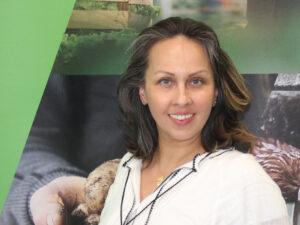
Aleksandra grew up on a smallholding, before launching a 30-year career in journalism, translation, digital marketing and Search Engine Optimisation. As the Head of Marketing, in charge of transforming strategy into tangible assets, by combing her two great loves of content writing and tech.

After two years of operation as a Limited Company, Agrecalc became part of Scotland’s Rural College (SRUC) as of 1 April 2025.
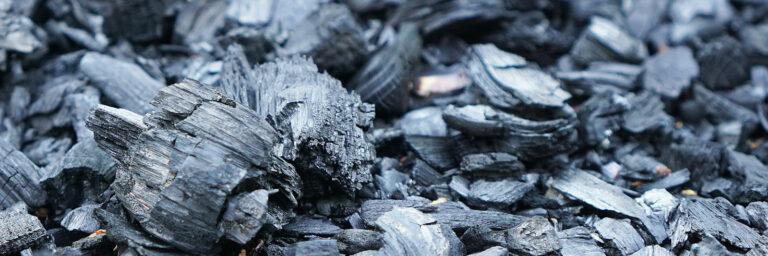
Biochar is a carbon-rich material produced by pyrolysing biomass, which offers a variety of potential agronomic benefits. In this guest article, Black Bull Biochar discusses how these effects work together to bolster productivity, sustainability, and resilience in farming.
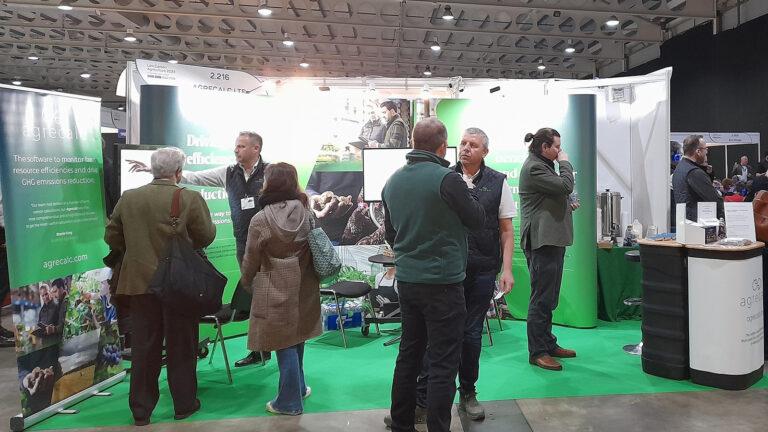
The Agrecalc team is looking forward to welcoming you at our stand (2.844) at this year’s Low Carbon Agriculture Show, taking place on March 5 and 6, at NAEC Stoneleigh near Kenilworth.